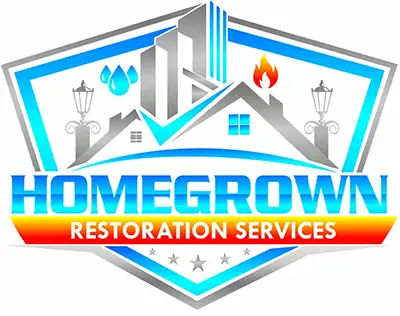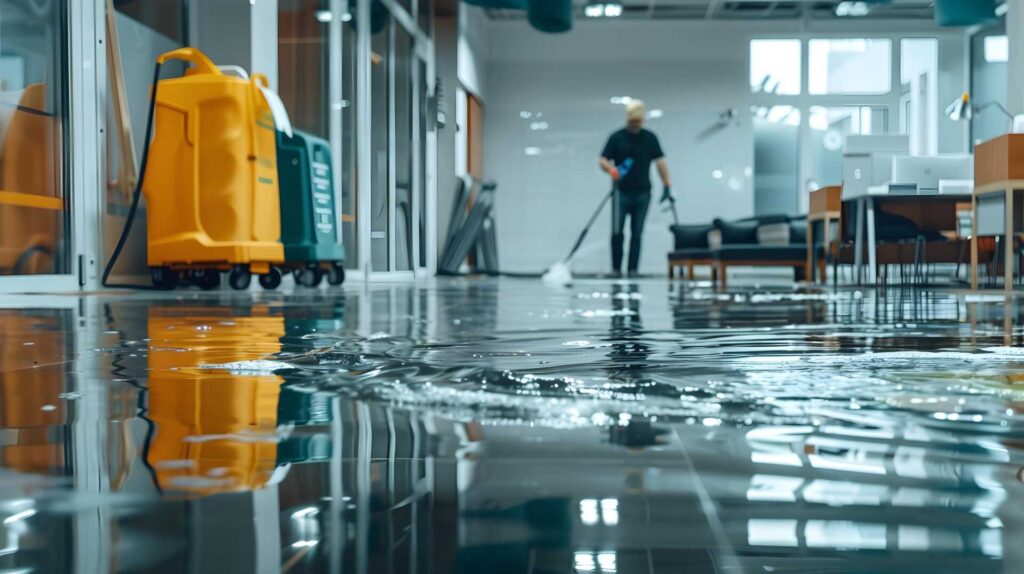While you might think that dealing with commercial flood damage is primarily about water removal, it’s essential to focus on structural integrity first. You’ll need to assess the foundation, walls, and other load-bearing structures to prevent potential collapses. Next, don’t underestimate the power of professional-grade dehumidifiers and air movers; these aren’t merely for drying out the space but also vital in halting mold growth. Finally, consider implementing a robust maintenance schedule for your plumbing and drainage systems to mitigate future flooding risks. With these strategies in place, you’ll restore your property and fortify it against upcoming water-related challenges. What’s your plan for the next time waters rise?
Key Takeaways
- Inspect structural integrity, including foundations and load-bearing walls, for any signs of damage.
- Utilize industrial drying equipment like dehumidifiers and air movers to manage moisture.
- Monitor and adjust humidity levels regularly using moisture meters to prevent mold growth.
- Reinforce infrastructure with water barriers and proper drainage systems to mitigate future risks.
- Develop and implement a flood response plan, including training staff and establishing communication protocols.
Assessing Structural Damage
When evaluating structural damage after a flood, it’s vital to start with a thorough inspection of your property’s foundation and supporting walls. Remember, you’re not in this alone. Many business owners face similar challenges, and ensuring the safety and integrity of your structure is paramount to your collective resilience and recovery.
Begin by examining the foundation for cracks, separations, and areas where water may have undermined the base. These signs can indicate potential weaknesses that might compromise the building’s structural integrity.
Next, assess the condition of the supporting walls. Look for bowing, leaning, or any unusual shifts that could suggest movement due to water pressure or soil erosion. It’s important to document every detail, as this will form the basis of your damage assessment and subsequent repair strategies.
Don’t overlook floors and load-bearing beams. Water can seep into cracks and joints, causing swelling or warping that affects the overall stability of the structure. Utilize moisture meters to gauge the extent of water penetration and identify areas that are at risk of further damage. This step is significant in planning the necessary repairs to restore structural integrity.
Consult with structural engineers who specialize in flood damage to get a professional evaluation. Their expertise will guide you in understanding the specific needs of your property and in planning effective restoration.
Together, you’ll ensure that your business is restored and fortified against future incidents, fostering a sense of security and belonging within your business community.
Implementing Drying Procedures
After evaluating the structural damage to your property, it’s important to begin implementing drying procedures to prevent further deterioration. Starting this process promptly enhances your chances of mitigating the damage and restoring your space to its former condition.
First, you’ll want to utilize professional-grade drying equipment. Industrial air movers and dehumidifiers are vital for effective moisture control. These machines work by pulling in damp air and expelling dry air, speeding up the evaporation process from walls, carpets, and furniture.
It’s essential that you distribute several units throughout the affected areas to ensure thorough coverage.
Next, focus on enhancing natural ventilation where possible. Open windows and doors to create airflow, which supports your drying equipment in circulating air and reducing humidity levels.
However, keep in mind the outdoor humidity; if it’s higher outside than inside, this can impede your drying efforts.
Monitoring the progress is also key. Use moisture meters to regularly check the humidity levels in different parts of the building. This isn’t just about drying out visible water; it’s about making sure that hidden pockets of moisture aren’t left behind to cause mold or structural issues later on.
Lastly, remember that every part of your space needs attention. Check hidden areas like under flooring and within wall cavities.
Sometimes, these areas require more targeted drying strategies, such as injectidry systems or structural cavity drying.
Preventing Future Water Incidents
To prevent future water incidents, it’s vital to establish a regular maintenance schedule for your property’s plumbing and drainage systems. Regularly inspecting these systems allows you to catch and address minor issues before they escalate into major problems.
Include checking for any signs of wear and tear, verifying all drainage areas are clear of debris, and confirming that water flows freely without blockages.
Beyond maintenance, consider upgrading your infrastructure with advanced solutions like water barriers and backflow prevention devices. These installations are critical in managing water flow during heavy rainfall or flooding, effectively minimizing the risk of water damage.
Implementing smart landscaping is another strategic move. Slope the terrain away from your building to encourage water to drain away from the foundation. Planting vegetation that absorbs excess water can also help reduce the burden on your drainage systems.
Remember, every small step contributes to a larger shield against potential water damage.
Engage with professionals who specialize in water risk assessment. They can provide personalized advice tailored to your property’s specific needs and vulnerabilities. This collaboration enhances your preparedness and fosters a sense of community and support among fellow business owners facing similar challenges.
Lastly, keep your team informed and trained on emergency response procedures. If everyone knows what to do in the event of a flood, you’ll ensure a swift, efficient reaction that could greatly reduce the impact of water incidents.
Together, you’re repairing, reinforcing, and readying your commercial space against future threats.
Summary
As you patch the quilt of your business post-flood, remember that every stitch counts. Rapidly evaluating structural damage is your first line of defense, much like checking the weather before a storm. Employing industrial drying tools is your shield, safeguarding against mold’s creeping invasion. And a robust maintenance plan? That’s your fortress, keeping future floods at bay. By embracing these strategies, you reinforce your business against the next deluge.

